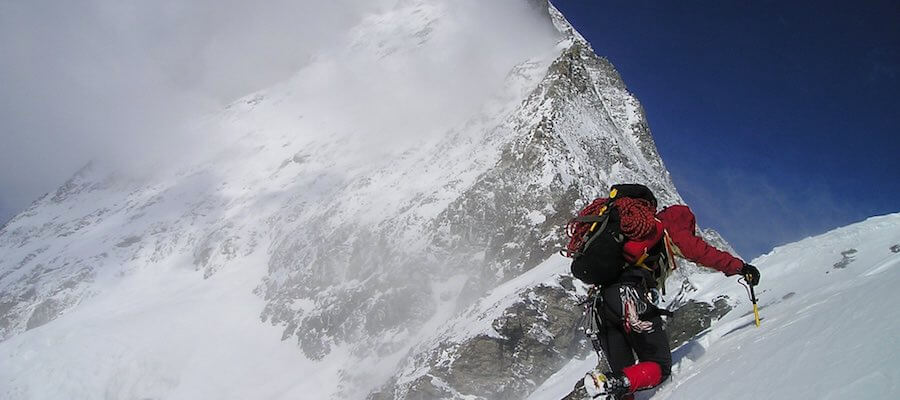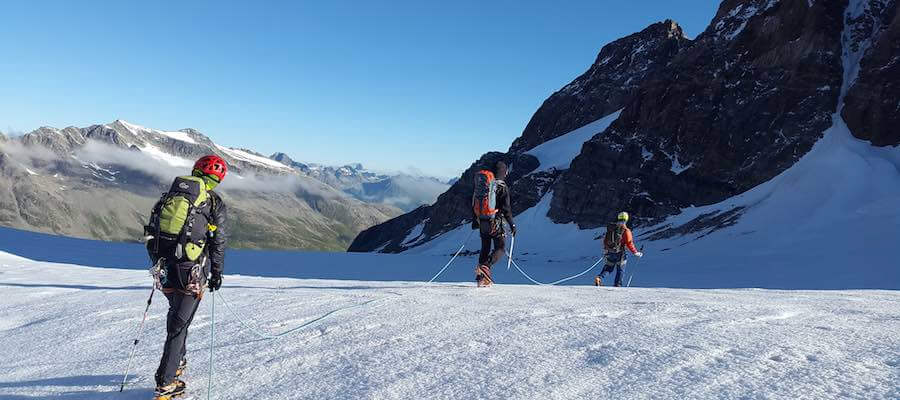How to carefully plan your monumental career ascent
Maybe it has something to do with moving up into the Sierra Nevada mountains after spending over 20 years of my Tech career in Silicon Valley. But, I keep thinking about the similarities between successfully navigating a lifetime career and climbing a mountain.

As you are just getting started, from a distance, the mountain looks deceptively smooth and the ascent seems like it must be easy. But, you’re never prepared well enough and each step of the way has some surprise. As you get closer, you select a point that you consider to be your summit, you choose a path up, and you begin climbing.
Of course, when you are in the thick of things, you can no longer see the summit or even the entirety of your chosen path. All you can see is what is right around you. What seemed smooth and easy from a distance is now clearly rocky, challenging, and occasionally treacherous.
You may discover that your path is blocked. You may have to change course to continue your upward progress. You may even have to backtrack occasionally to find a way around and start up a new trail.
Finally, as you ascend and get closer and closer to your original summit, new vantage points may reveal that it isn’t what you thought it would be. That summit isn’t where you thought you’d end up, and now you see other goals that are more appealing. You’re stuck and can’t decide how to proceed.
Prepare well
Just as you would for an actual mountain climbing expedition, you need to plan and prepare for how you want your career to turn out. You can’t just toss a few things into a backpack and wing it. Do that, and you’ll most likely end up somewhere you wish that you were not.

Spend some time understanding who you really are and where you want to end up in life. Think out 10, 20, or even 30+ years. Deeply understand your talent, strengths, capabilities, knowledge, and experience. Where can that take you? Where does that lead you? Envision a summit that would actually make you feel satisfied and fulfilled.
Plan multiple paths
It’s a lot easier to map out alternative paths when you have some distance and perspective. Once you’re neck deep in the daily grind, you will lose sight of what alternatives might be possible. We all do.

Photo by Tommy Lisbin on Unsplash
I call this having your Plans A-D:
- Plan A will be your primary ascent. Given your best planning and thought, this is the one that you think will take you to the summit that you want. I remember when this was my career plan at eBay.
- Plan B is a course correction that looks to be another path to your desired summit, if Plan A goes wrong at some point. For me, this is when I left eBay to join Yahoo and became the VP of Consumer Products for Search.
- Plan C is an entirely different course that leads to a different summit that you think would also be desirable. I activated my Plan C when I decided to leave the corporate world and become an entrepreneur with my own consulting business and founding a startup.
- Plan D is what you fall back to when a surprise storm hits. When everything fails and you need to go into survival mode for a while, Plan D will keep you going. I have my eye on a job at my favorite local hardware store (I love tools). 😉
Some ascents have a limited window of opportunity
There are some paths and peaks that you don’t want to attempt at night. I remember my brother telling me about one of his climbs in the Rockies that started later than planned. The path was fine in the full daylight, but darkness started to fall. It became increasingly treacherous and he wasn’t sure that he was going to make it.

Unfortunately, some careers are the same. You have a window of opportunity for your ascent, obviously measured in years, not hours. But, you still have to climb fast and hard, to have any chance of reaching the summit. If you slow down, take breaks, and make camp along the way, you’re done. You simply won’t reach that peak.
My friends in Silicon Valley Tech know this. Over drinks, people will be more honest and say, “If you’re not a C-level executive by 50, you never will be.” Ageism is alive and well there.
I know that there are a number of professions that have similar issues with ageism. If that is true of your industry, then make your plans and climb fast. Otherwise, identify a career summit that doesn’t discriminate for any of the reasons with which we’ve all become sadly familiar (e.g., ageism, sexism, racism).
We all get stuck at some point

Photo by Tommy Lisbin on Unsplash
It’s normal to feel stuck or stalled at some point in your career. There will be times of rapid advancement (i.e., frequent raises and promotions), and times that it seems to slow to a crawl. If it goes on for too long, you may need to some strategic job hopping.
It helps to have a supportive “scene” and peer group that will listen, give honest advice, encourage, and support you in your climb. I also think it is critical to have a realistic “career hero” in mind. This might be someone who has made the ascent before you and knows the twists, turns, and surprises on the path. He or she has reached the summit and knows what you’re in for. If you’re lucky, this person could even become a mentor.
It’s ok to ask for help
The smart climbers never climb alone. They know how risky that can be. If something goes wrong, no one else is there. It is best to have partners who encourage, guide, and help each other.

Many of us let our pride get in the way of asking for help when it’s appropriate. We don’t want to look weak or foolish. We don’t want to admit that we’ve made a mistake. It’s unfortunate, really, because letting yourself be vulnerable and asking the right person for help can create the exact breakthrough that you need.
You don’t have to start over
This is where ascending the summit of your career has a distinct advantage over climbing a physical mountain. There are some ways that you could switch to a different summit mid-climb, but they are pretty intense.

When you decide that a particular career summit is no longer right for you, it is very discouraging. Part of you wants to just push on and keep going, even if you’re miserable. After all, you’ve put so many years (or decades) into this specific career. That’s the good ol’ sunk cost fallacy at work.
If you now have your eye on a different summit, you can’t even imagine climbing all the way back down and starting over at the base of a new mountain. I was in my 40s when I did this and I can confirm that the thought made me sick to my stomach.
I had spent almost 20 years climbing in my old Tech career, getting a Ph.D., scrambling from being an intern at IBM to landing a dream job at Apple, then a series of startups and entrepreneurial adventures, moving up into management at eBay, and finally becoming a VP at Yahoo. Start over from the bottom of a new career?
So, I rejected that reality, carefully constructed my new career, and hit the ground running. Think of it as paragliding from one mountain slope to another. Terrifying? Yes, it was. And it was loaded with immense challenges, hard work, and long hours. But, it was worth it. I love what I do now and it’s rewarding to help others with their own career challenges.
I know that you can do this too, if you decide that you want to pursue a new career summit. You don’t have to start over. You can leverage everything you have become to kickstart the new career.
Best of luck!
I wish you the best of luck with your own career ascent. Plan and prepare, surround yourself with the right people, stay focused and climb hard, and don’t be afraid to make a change if it is necessary.
Life is too short to be miserable. It is too precious to waste chasing a career goal that isn’t what you thought it would be. You do have the right to choose a summit that will fulfill you.
Don’t forget that making a change doesn’t have to mean starting over. If you need any help transforming your career and putting a plan together, reach out to me. It’s what I love doing.
If you’d like to join my free Slack team of career mountaineers, we’d love to have you!
